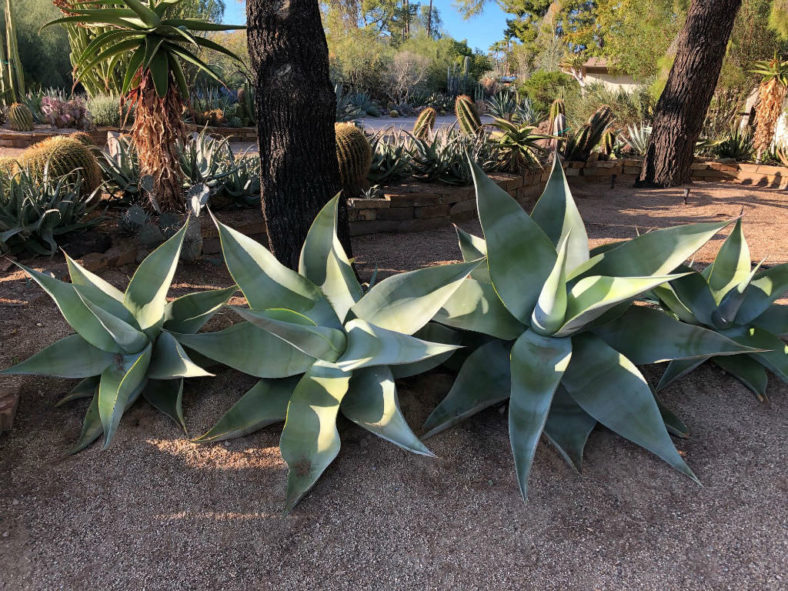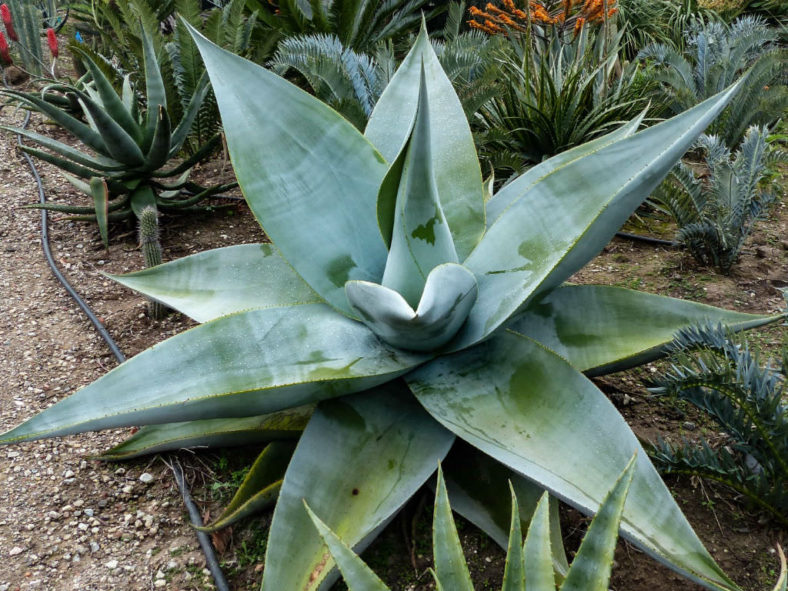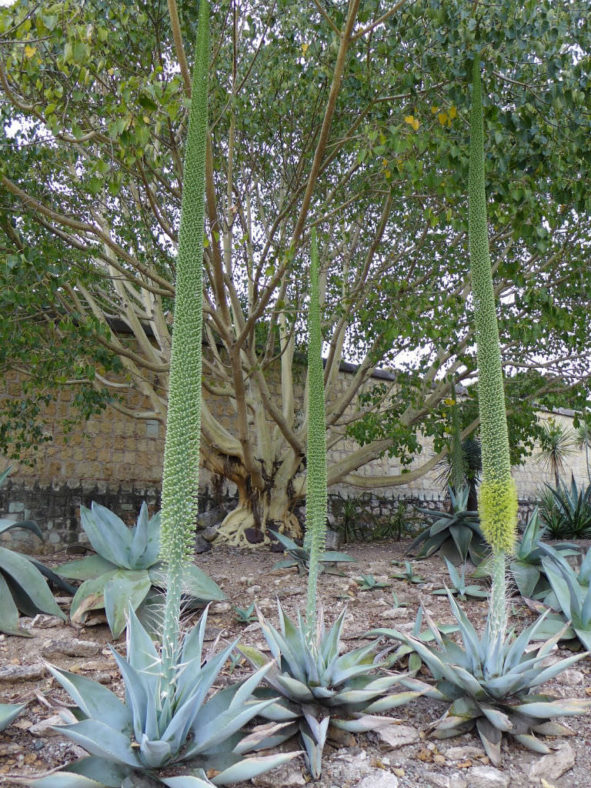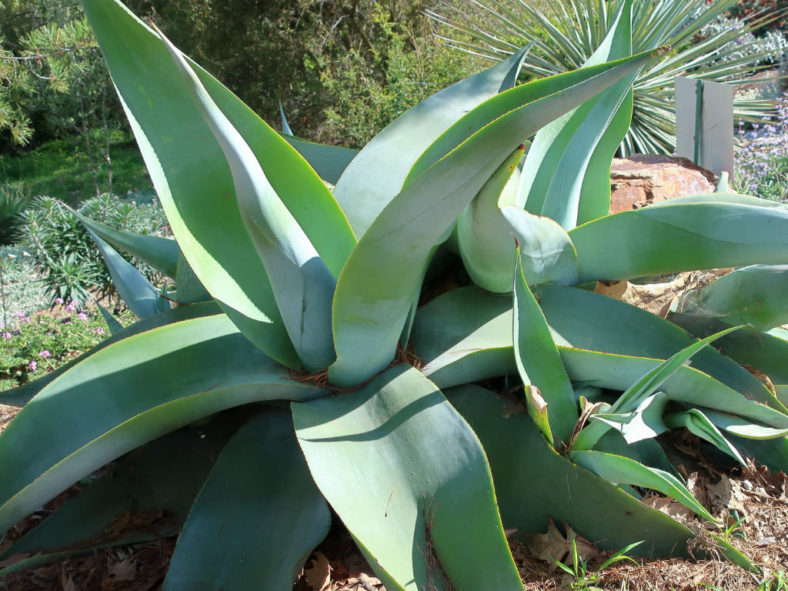Scientific Name
Agave guiengola Gentry
Common Name(s)
Dolphin Agave
Scientific Classification
Family: Asparagaceae
Subfamily: Agavoideae
Genus: Agave
Etymology
The specific epithet "guiengola (GWEN-go-la)" refers to Cerro Guiengola, a limestone mountain in the southern Mexican state of Oaxaca, where this species was first discovered.
Origin
Agave guiengola is native to Mexico (Oaxaca).
Description
Agave guiengola is a succulent plant that forms attractive rosettes of whitish-green to bluish leaves. It is one of the most spectacular Agaves. The rosettes can reach up to 4 feet (1.2 m) in height and 6 feet (1.8 m) in diameter. The common name "Dolphin Agave" refers to the plant's broad, smooth, and surprisingly soft leaves with many dark brown marginal teeth and a sharp brown terminal spine.
After 15 to 25 years, usually from spring to summer, the rosette produces a tall, unbranched spike with pale yellow flowers. The flower spike can grow up to 10 feet (3 m) tall. The fruits are brown, elongated capsules that can reach up to 1 inch (2.5 cm) in length.

How to Grow and Care for Agave guiengola
Light: These plants require full sun to part shade. If you are growing Agaves indoors, choose a bright, sunny window with as much sun as possible. Agave plants love going outside from spring to fall.
Soil: Agaves will tolerate most soils as long as they have good drainage but prefer sandy or rocky soil.
Hardiness: Agave guiengola can withstand temperatures as low as 20 to 40 °F (-6.7 to 4.4 °C), USDA hardiness zones 9a to 10b.
Watering: Mature plants are very drought tolerant. From spring to fall, water thoroughly your Agave when the soil mix becomes dry. In winter, water sparingly about once a month. Plants in containers require more frequent watering than those in the ground.
Fertilizing: Give your Agaves a small amount of fertilizer in the spring during the first two years.
Repotting: When the pot becomes full of roots, it has become pot-bound. If you notice your Agave becoming pot-bound, repot it with new soil in a slightly larger pot than the old one.
Propagation: Since it can take years to produce seeds, Agaves are usually propagated by offsets.
Learn more at How to Grow and Care for Agave.
Toxicity of Agave guiengola
Agave guiengola is not toxic to humans but may be mildly poisonous to children and pets.
Cultivars of Agave guiengola
Links
- Back to genus Agave
- Succupedia: Browse succulents by Scientific Name, Common Name, Genus, Family, USDA Hardiness Zone, Origin, or cacti by Genus
Photo Gallery
Click on a photo to see a larger version.


